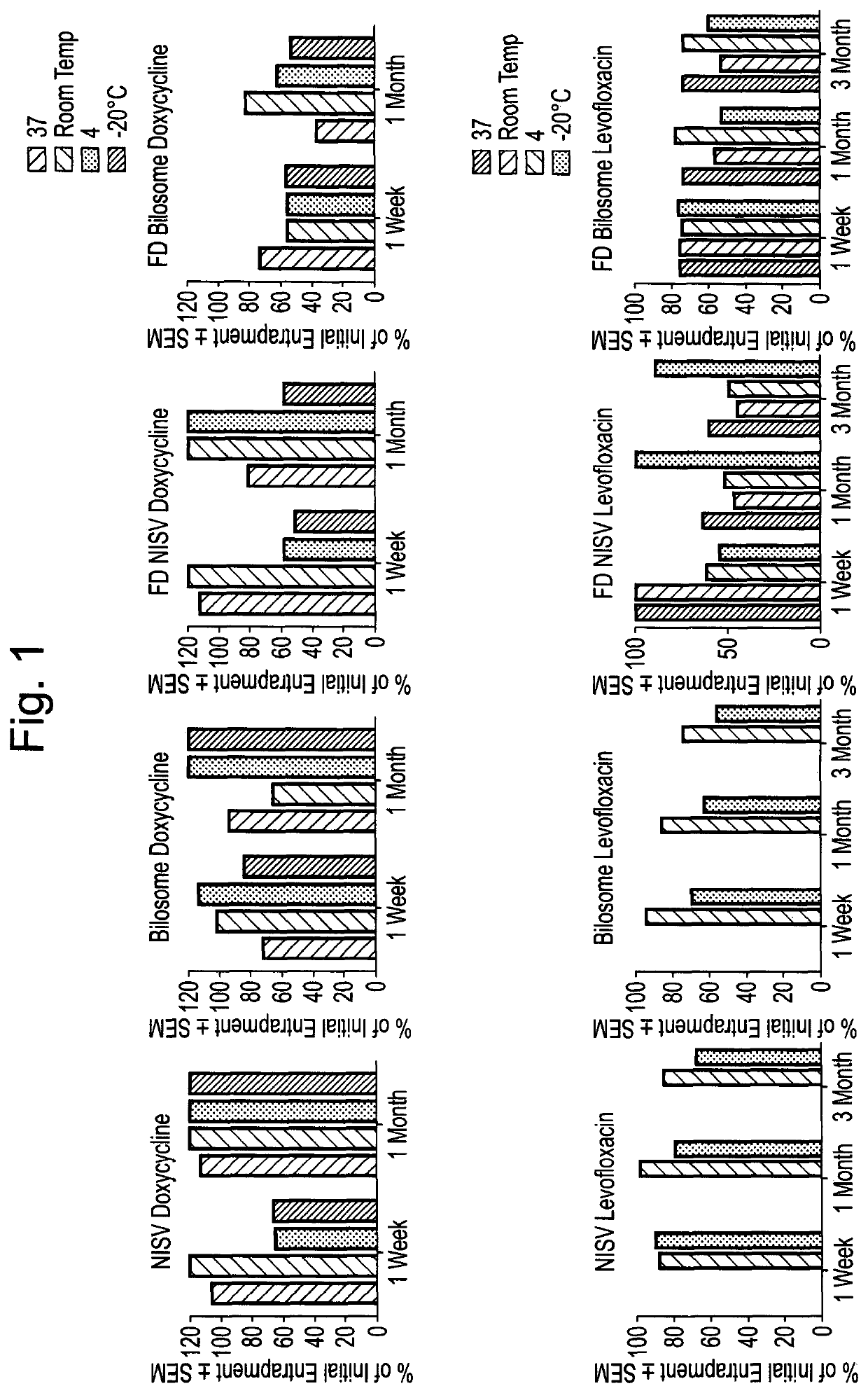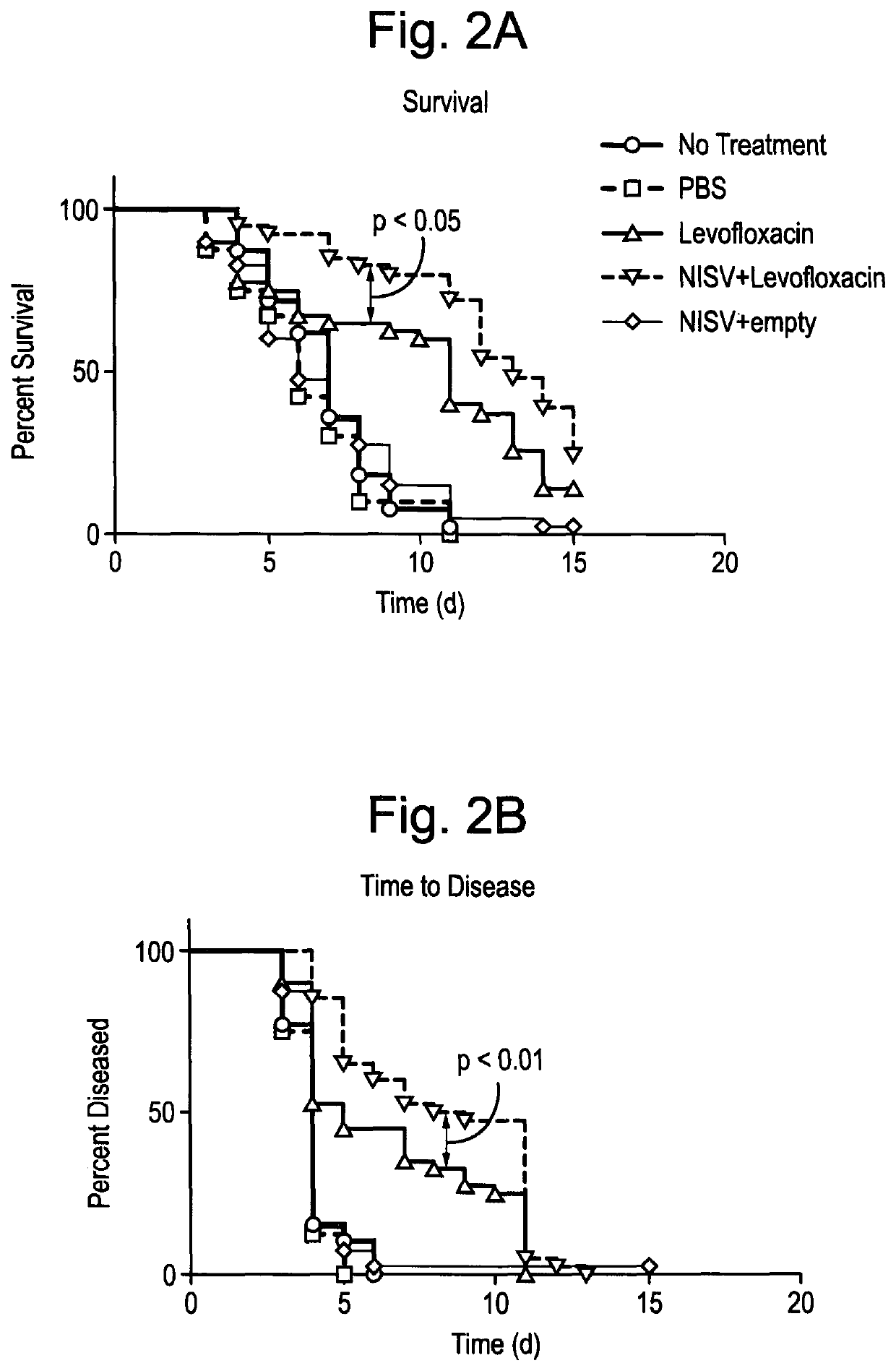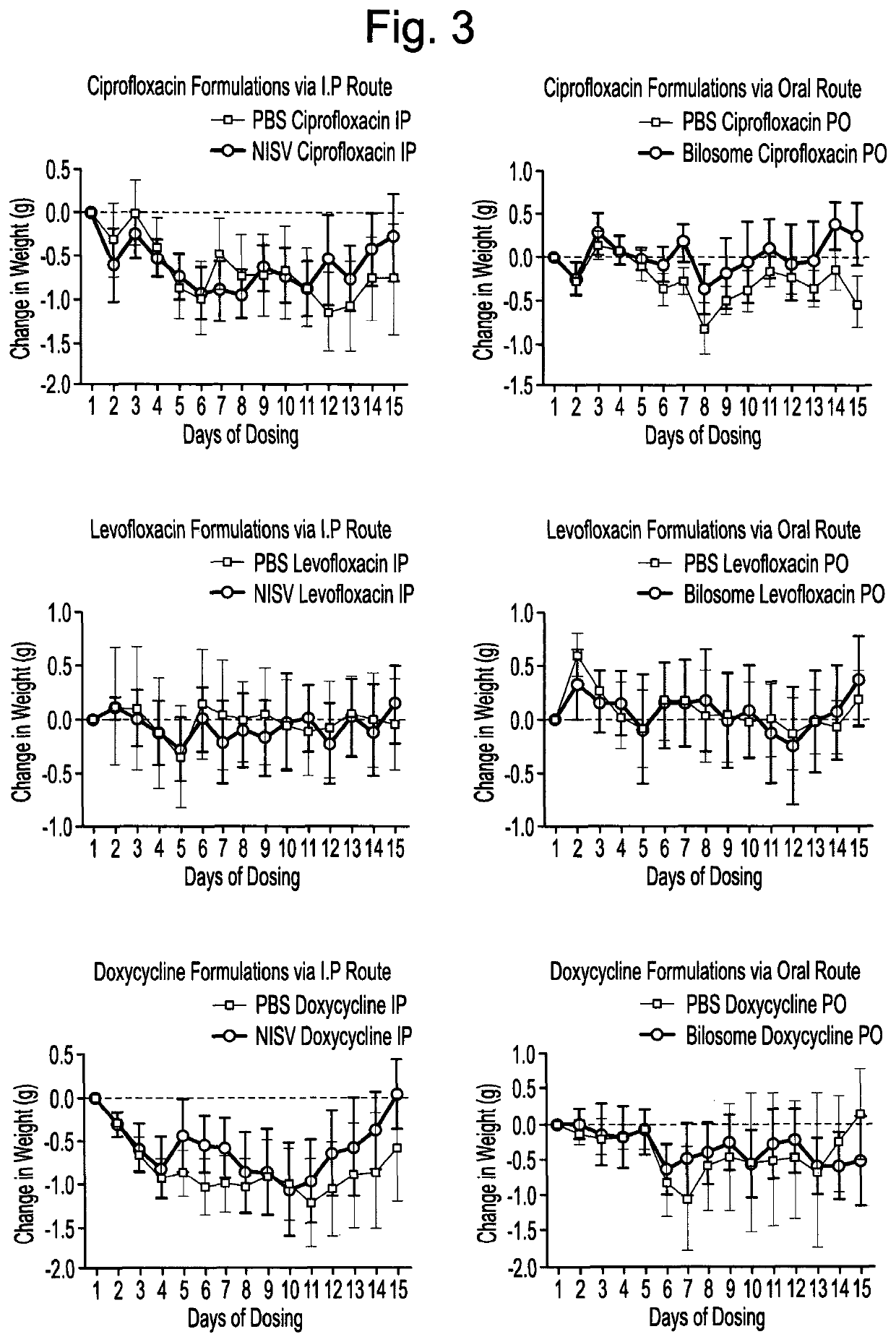Methods for the preparation of a pharmaceutical-vesicle formulation and associated products and uses
a technology of vesicle and formulation, applied in the field of preparation of vesicle formulation, can solve the problems of ineffective access and treatment of pathogens, lack of investment in new antimicrobial therapies, and the serious side effects of weight loss of viruses, so as to reduce the serious side effects of weight loss, maintain antimicrobial activity, and alleviate antibiotic-induced weight loss
- Summary
- Abstract
- Description
- Claims
- Application Information
AI Technical Summary
Benefits of technology
Problems solved by technology
Method used
Image
Examples
Embodiment Construction
lass="d_n">[0098]The method of the invention provides a method for the preparation of a pharmaceutical-vesicle formulation, the method comprising the steps of: a) heating vesicle components comprising monopalmitoyl glycerol, cholesterol and dicetyl phosphate at a temperature in the range of 50° C. to 150° C.; b) dissolving a pharmaceutical agent in a pharmaceutically-acceptable carrier and heating the resultant pharmaceutical agent-carrier mixture at a range of 30-99° C.; c) adding the pharmaceutical agent-carrier mixture to the vesicle components to provide a formulation mixture; and d) processing the formulation mixture to form a pharmaceutical-vesicle formulation, whereby the pharmaceutical agent and carrier is entrapped within a plurality of vesicles; wherein the pharmaceutical-vesicle formulation is reconstituted in a known quantity of the pharmaceutical agent dissolved in a pharmaceutically-acceptable carrier to provide a biphasic pharmaceutical-vesicle formulation.
[0099]Vario...
PUM
| Property | Measurement | Unit |
|---|---|---|
| temperature | aaaaa | aaaaa |
| concentration | aaaaa | aaaaa |
| size | aaaaa | aaaaa |
Abstract
Description
Claims
Application Information
 Login to View More
Login to View More - R&D
- Intellectual Property
- Life Sciences
- Materials
- Tech Scout
- Unparalleled Data Quality
- Higher Quality Content
- 60% Fewer Hallucinations
Browse by: Latest US Patents, China's latest patents, Technical Efficacy Thesaurus, Application Domain, Technology Topic, Popular Technical Reports.
© 2025 PatSnap. All rights reserved.Legal|Privacy policy|Modern Slavery Act Transparency Statement|Sitemap|About US| Contact US: help@patsnap.com



